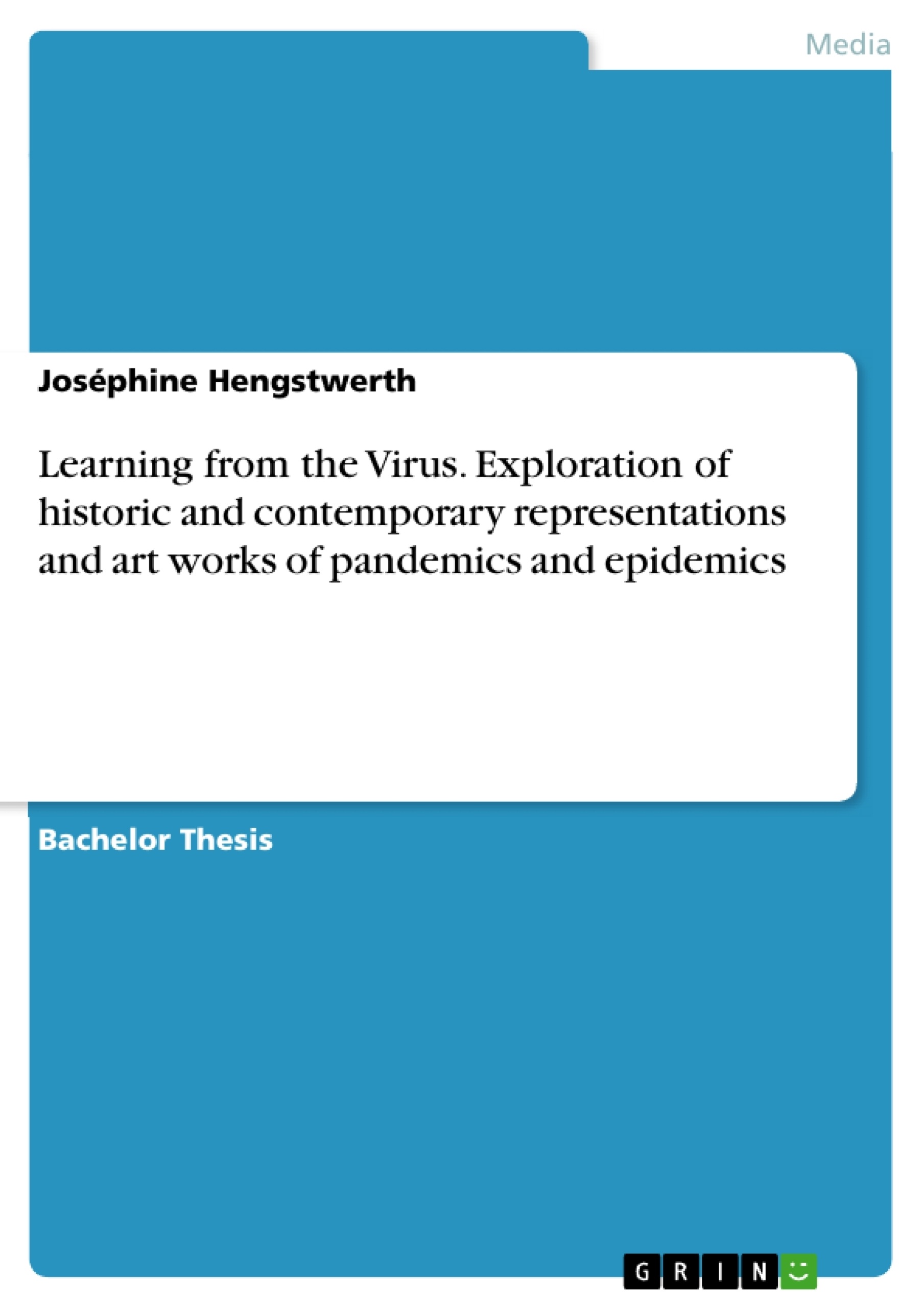During times of crisis, artists have been quick to respond and reflect on the chaos and destruction around them. While the world is tackling viruses, the artist has the function to depict the horror around the community and give a sense of understanding and empathy to people. Throughout history, there have been multiple pandemics and epidemics which have brought various responses from the art world.
In this dissertation I will look at representations of Black Death, HIV/AIDS, the Great Influenza pandemic and COVID-19. I have used historical texts and image examples including contemporary artist like Tracey Emin and David Wojnarowicz. I also use methods derived from practice, in activating histories to understand crisis.
Art serves many purposes in society including political and social causes, entertainment, self-expression, propaganda. During a crisis like the current COVID-19 pandemic, it especially helps to connect people and keep them sane. Throughout the year, people engaged in different art challenges on social media, shared home DIY projects, made their own facemasks and children drew rainbows to thank the NHS. Furthermore, artists around the world shared plenty of street art and digital art depicting facemasks, essential workers and transmitting a sense of longing for a brighter future.
In contrast to that, there was a CyberFirst campaign by the government targeted at the creative industry encouraging them to rethink their career (see Appendix A). The campaign poster depicted a ballet dancer alongside the text ‘Fatima’s next job could be in cyber (she just doesn’t know it yet)’ next to the slogan ‘Rethink. Reskill. Reboot.’ While there might have been some good intentions behind the campaign, it received a lot of criticism as it seems to suggest that art jobs are not important or worthy. It especially caused outrage as the arts and culture sector were hit hard by the effects of lockdown and the government was pressured to provide increased financial support.
I am motivated by my own continuous practice (including studio and research) by reflecting on the past and real lived experiences. It is my desire to actively learn from history as a tool for dealing with contemporary crises.
Table of Contents
Introduction
WHAT IS PLAGUE ART?
The Black Death
DEATH
DANSE MACABRE
MADONNA DELLA MISERICORDIA
SAINTS
HIV/AIDS crisis
QUEER ART
Great Influenza Pandemic
EGON SCHIELE
EDVARD MUNCH
C0VID-19pandemic
TRACEYEMIN
Conclusion
AppendixA
Appendix B
Appendix C
Appendix D
Appendix E
Appendix F
Appendix G
- Quote paper
- Joséphine Hengstwerth (Author), 2021, Learning from the Virus. Exploration of historic and contemporary representations and art works of pandemics and epidemics, Munich, GRIN Verlag, https://www.grin.com/document/1370755
-

-

-

-
Upload your own papers! Earn money and win an iPhone X. -

-
Upload your own papers! Earn money and win an iPhone X. -

-
Upload your own papers! Earn money and win an iPhone X. -

-
Upload your own papers! Earn money and win an iPhone X. -

-
Upload your own papers! Earn money and win an iPhone X. -

-
Upload your own papers! Earn money and win an iPhone X. -

-
Upload your own papers! Earn money and win an iPhone X. -

-
Upload your own papers! Earn money and win an iPhone X. -

-
Upload your own papers! Earn money and win an iPhone X. -

-
Upload your own papers! Earn money and win an iPhone X.

